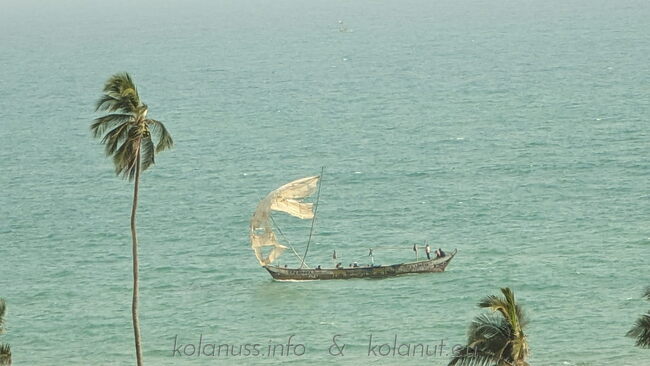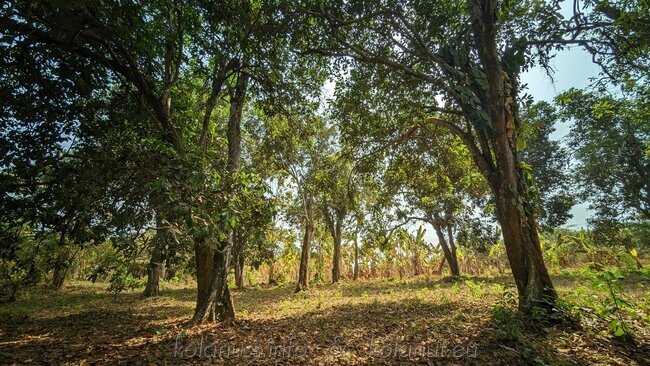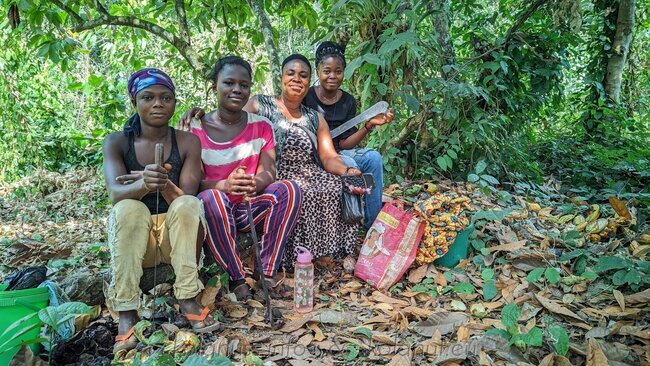the Plant

The kola trees are evergreen deciduous trees with alternate leaves. They also have stipules, but these usually fall off. In their natural habitat, the tropical forest of West and Central Africa, the trees can grow up to 25 meters tall, but they usually only reach a height of 10 to 15 meters. The spread of their crown is also strongly influenced by the amount of vegetation around them. In West Africa, they are among the trees that provide shade for lower vegetation, as well as animals and humans with their leaves, but when standing alone, their crown develops even more extensively.
- Details


Originally, the cola nut and its many subspecies are found in almost all countries of West and Central Africa, where the favorable tropical conditions for them prevail. Cola nitida (the economically most important subspecies) is native to Ghana, Sierra Leone, Ivory Coast, Nigeria, and Liberia. Today, cola is also found on the Asian and American continents and has already been cultivated in Angola, Brazil, Chad, Congo, Democratic Republic of Congo, Equatorial Guinea, Ethiopia, Gabon, Guinea, India, Jamaica, Kenya, Mali, Mozambique, Senegal, Somalia, Sudan, Tanzania, Togo, Uganda, USA, and Zimbabwe.
A comprehensive and active database with a world map regarding the approximately 140 cola species is provided by GBIF. The diversity in growth, color, and forms is fascinating, as shown in their gallery, but this is not the focus of this website.
- Details

The kola tree (Cola nitida) is an impressive evergreen tree native to the tropical rainforests of West Africa. Reaching heights of up to 25 meters with a sprawling growth habit, it shapes the landscape. Its cracked bark and dense, leathery leaves give it a robust appearance. The tree thrives particularly well in deep, nutrient-rich soils and requires consistent rainfall. It is adaptable and grows in both partial shade and full sun. The kola tree is not only ecologically valuable but also economically significant, as its seeds, the kola nuts, are rich in caffeine and traditionally used as a stimulant.
- Details

Ants protect the fruits from pests by spinning webs around them. Nevertheless, the kola nut has enemies such as the kola beetle, moth larvae, and a type of mistletoe.
- Details

Cola nuts produce flowers and fruits throughout the year, but the main harvest season is just before the rainy season. The fruits are cut from the tree using long poles with blades or simply collected from the ground. After being hacked open, the seeds are soaked to remove the white skin, revealing their vibrant colors ranging from red to pink to white. The cola nuts are then pre-dried in the shade and can be stored for months in this state. Further drying is only necessary for export.
- Details

The cola nut is a natural powerhouse with up to 3.5% caffeine and 1% theobromine, which have a gentle and long-lasting effect. It contains valuable ingredients such as catechin and epicatechin, which have antioxidant effects, as well as tannins and proteins. Ideal for an active daily life, it supports concentration, lifts moods, and promotes communication. Perfect for fasting and fitness, it also aids in weight control. However, caution is advised in case of a caffeine allergy.
- Details

The cola nut has a tart, spicy taste with a bitter note due to the caffeine and theobromine it contains, similar to unroasted cocoa. Good quality usually has a fruity note, while poorer quality smells musty. Fresh cola nuts are crispy and aromatic, similar to chestnuts, hazelnuts or acorns, and are popular among Africans and connoisseurs. The bitter cola, on the other hand, lives up to its name and tastes distinctly bitter. It differs significantly from the cola nut in appearance and smell and is often used as an aphrodisiac.
- Details

Domain: Eukaryota (Organisms with a cell nucleus)
Kingdom: Plantae (Plants)
Division: Angiospermae (Flowering plants)
Class: Eudicotyledoneae (Dicotyledonous plants)
Order: Malvales (Mallow-like)
Family: Malvaceae (Mallow family)
Subfamily: Sterculioideae (Sterculia-like)
Genus: Cola Species: Cola nitida, Cola acuminata, Cola verticillata, Cola gigantea, Cola ballayi, etc.
- Details

 DE
DE  EN
EN